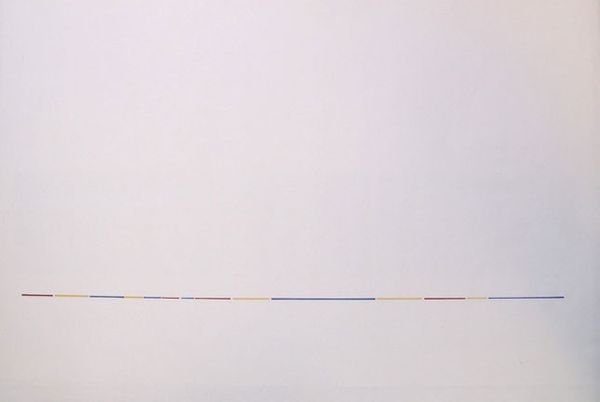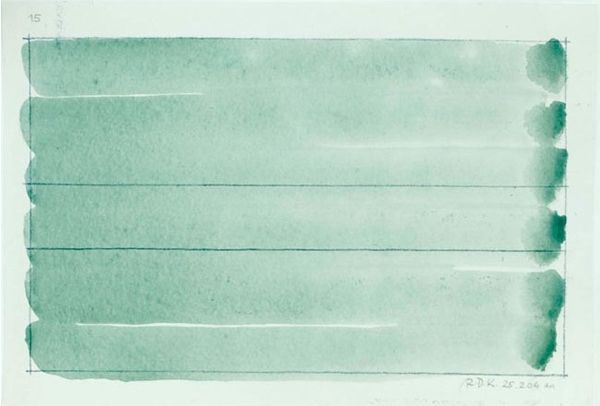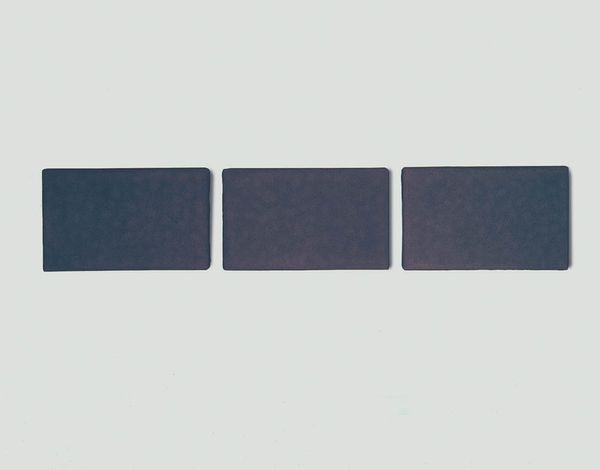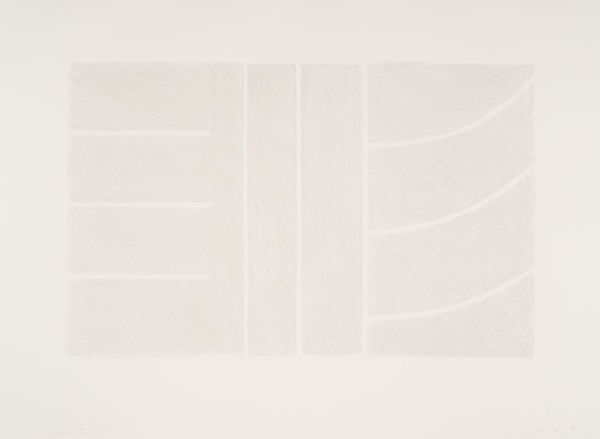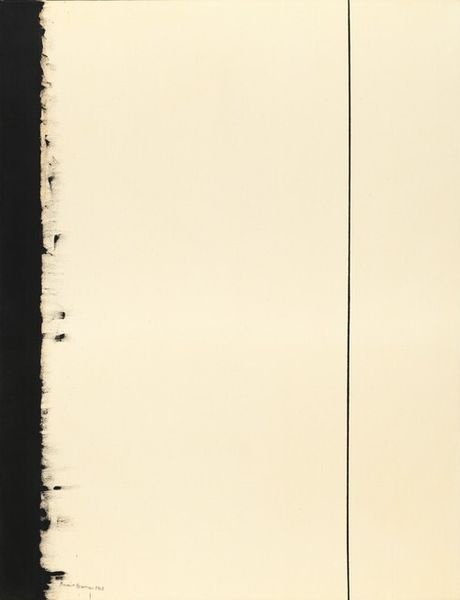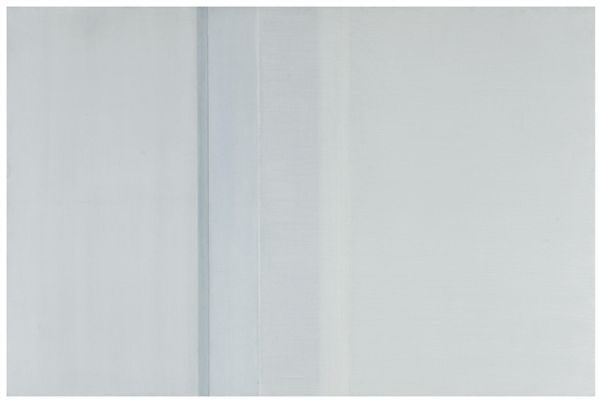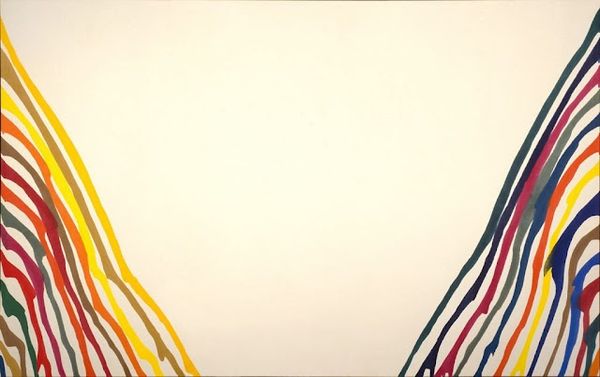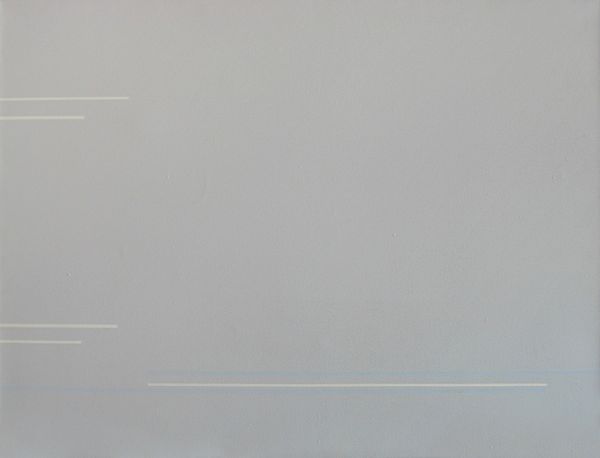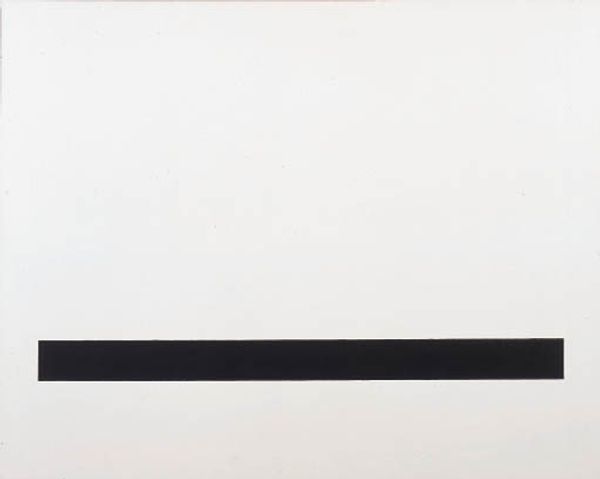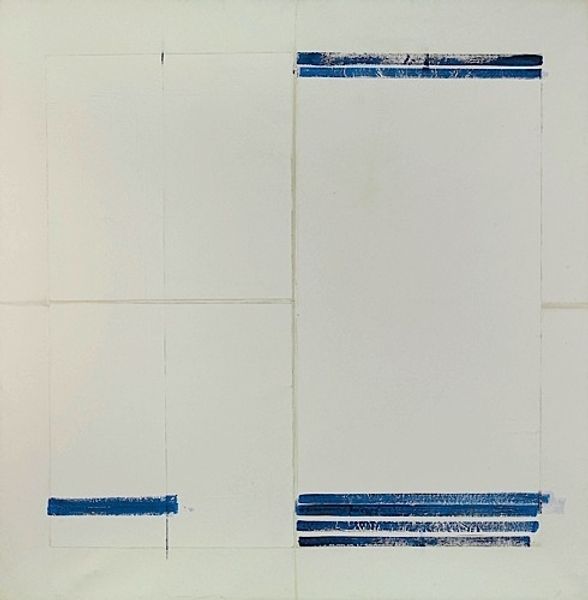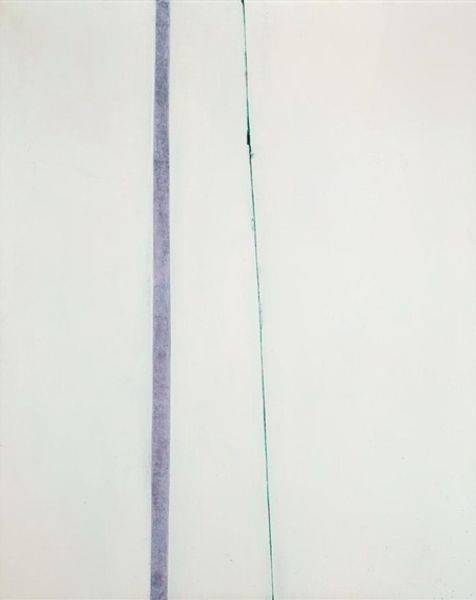
acrylic-paint
#
conceptual-art
#
minimalism
#
acrylic-paint
#
geometric
#
abstraction
#
line
Copyright: Kishio Suga,Fair Use
Curator: I’m struck by the almost meditative simplicity of Kishio Suga’s "Deep Rhythm of Lights" from 1975. Painted in acrylic, we see horizontal lines of varying thickness traversing a clean, white plane. What is your initial take on this piece? Editor: Restrained, yet resonant. The blue lines against the white field give it a kind of serene, aquatic feel, doesn't it? A stark contrast against the minimalist works often seen at the time. Curator: It's true. This was done during the height of the Mono-ha movement, and Suga's pieces from that period often examine how objects interact in space. "Deep Rhythm of Lights" can be read as an extension of that philosophy—it highlights negative space while simultaneously calling attention to surface. What do you see as key symbolic aspects? Editor: It is intriguing that the lines aren't perfectly uniform or evenly spaced. This irregularity adds a layer of subtle complexity and even reminds me a bit of musical staves, hinting at a rhythm beyond just the visual. Also, there is something incredibly poetic about those delicate touches. Curator: Precisely! This asymmetry prevents the composition from feeling static. We begin to register each line almost as an individual gesture, and the cumulative effect triggers a sense of continuity, despite the broken strokes. These lines do not exist in a vacuum, as you note. Editor: Looking at this within the wider socio-political landscape of 1970s Japan, the minimalism perhaps offered a quiet form of resistance. An assertion of subjective experience outside of booming industrialization and perhaps consumerism. Curator: An excellent point. Its understated nature allows the viewer room for contemplation—a space to engage actively in perceiving, rather than being dictated a specific narrative or feeling. It's also remarkable that with such restraint, it has endured so resonantly. Editor: Yes, "Deep Rhythm of Lights" holds up as a powerful statement today because it focuses on fundamentals. In a world clamoring for attention, perhaps there's a compelling lesson to be learned from quiet works like this that speak volumes.
Comments
No comments
Be the first to comment and join the conversation on the ultimate creative platform.
